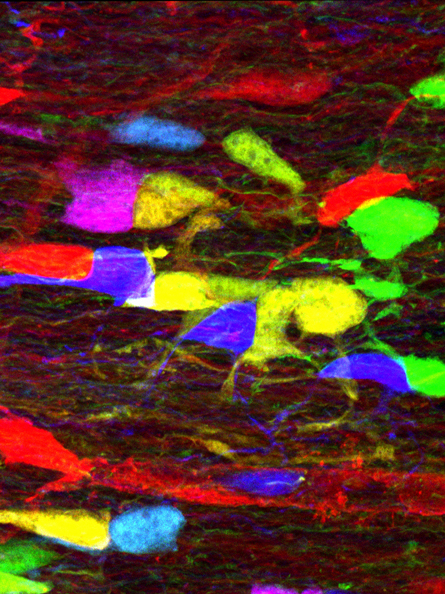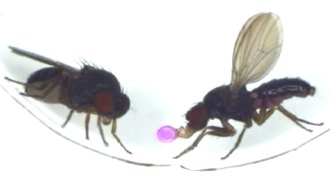‘Brainbow’ illuminates cellular connections
Scientists light up cells to track connections in mouse’s optic nerve

NERVE PROTECTORS The glowing cells in this micrograph of a mouse’s optic nerve help shield electrical signals passing between eyes and brain. The Brainbow technique allows scientists to visualize how the cells work together.
Courtesy of A. Chédotal/Institut de la Vision







